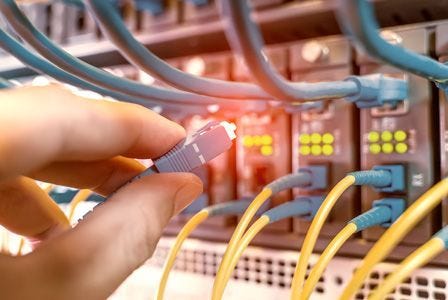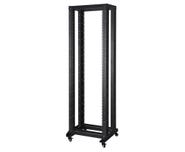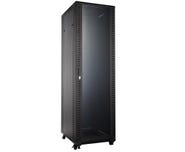

How to use a Server Rack
This informative article will show you how to use a Server Rack, including some of the key stops involved in setting up your rack securely. But first, we will explain what a Server Rack actually is.
What is a Server Rack?
A server rack, also known as a cabinet or rack enclosure, is a standardized framework or structure designed to store multiple computer servers and other networking equipment in an organized manner.
Server Racks provide a secure and centralized location for mounting and storing servers and managing the associated cabling and cooling systems. They often feature cable management systems, such as cable organizers and cable trays, to keep the cables organized and prevent tangling or interference.
Furthermore, server racks may also have built-in features for power distribution and network connectivity. You will generally find server racks in data centres, server rooms, and other IT infrastructure environments where multiple servers and networking devices are stored together.
How can you use a Server Rack?
- First and foremost, choose a server rack that suits your needs in terms of size, weight capacity, cooling options, cable management features, and other specific requirements.
- Ensure that the area where you will place the server rack has sufficient space, proper ventilation, and access to power and network connections.
- After selecting the area, position the server rack in the desired location. Make sure it is stable and securely anchored to the floor or wall.
- Consider the arrangement of servers and equipment within the rack and plan for proper airflow, cable management, and future expansion.
Note: You should consider factors like power requirements, networking connectivity, and accessibility for maintenance and troubleshooting. - Systematically organize the cables to maintain a tidy and efficient setup. You can also use cable management accessories such as Velcro ties, cable trays, and rack-mounted Patch Cord Minders to route and secure the cables neatly.
- After executing the previous step successfully, connect the power cords of the servers and networking equipment to the appropriate power outlets or power distribution units (PDUs) within the rack. You also need to route the network cables and connect them to the corresponding switches, routers, or patch panels as required.
- If the server rack does not have proper ventilation, you need to install fans or cooling units to maintain proper temperature and prevent overheating.
- Finally, implement physical security measures to protect the equipment, including lockable doors or panels, surveillance cameras, and access control systems to restrict unauthorized access to the rack.
Conclusion
We trust we have shown you how to utilize a Server Rack efficiently. By following the simple steps outlined, you will be able to use your Server rack efficiently to store and manage the servers and other networking equipment.
Recent Articles

Test Network Cabling & Patch Cords FAST with the New DATATESTER by CABAC
Testing LAN cables is quick and easy when you’ve got the new CABAC DATATESTER on hand. This budget LAN cable tester is perfect for contractors who need to test data and coaxial cable for correct termination.
View Products
Exploring the Advantages of Thin Patch Leads
For Australian data installers, selecting the right network components is critical to achieving the performance and reliability that your customers expect. Among these components, the humble patch lead plays a crucial role in interconnecting various devices.
View Products
FOBOT Buying Guide
In this informative article, we will provide a basic buying guide for FOBOTs or “Fibre Optic Break Out Trays” so that you can choose the right product for your specific needs.
View Products
What is a FOBOT?
In this article, we will explain what a FOBOT is and where they are used. We will also describe how a FOBOT works and the important role this component plays in managing and distributing optical fibres efficiently. So, if you're looking to learn all about FOBOTs, make sure to read this article...
View Products
What is the difference between OS1 and OS2 Singlemode Optical Fibre?
This technical article delves into the differences between OS1 and OS2 Singlemode fibre optics, including their core characteristics, performance specifications, and ideal applications.
View Products


















